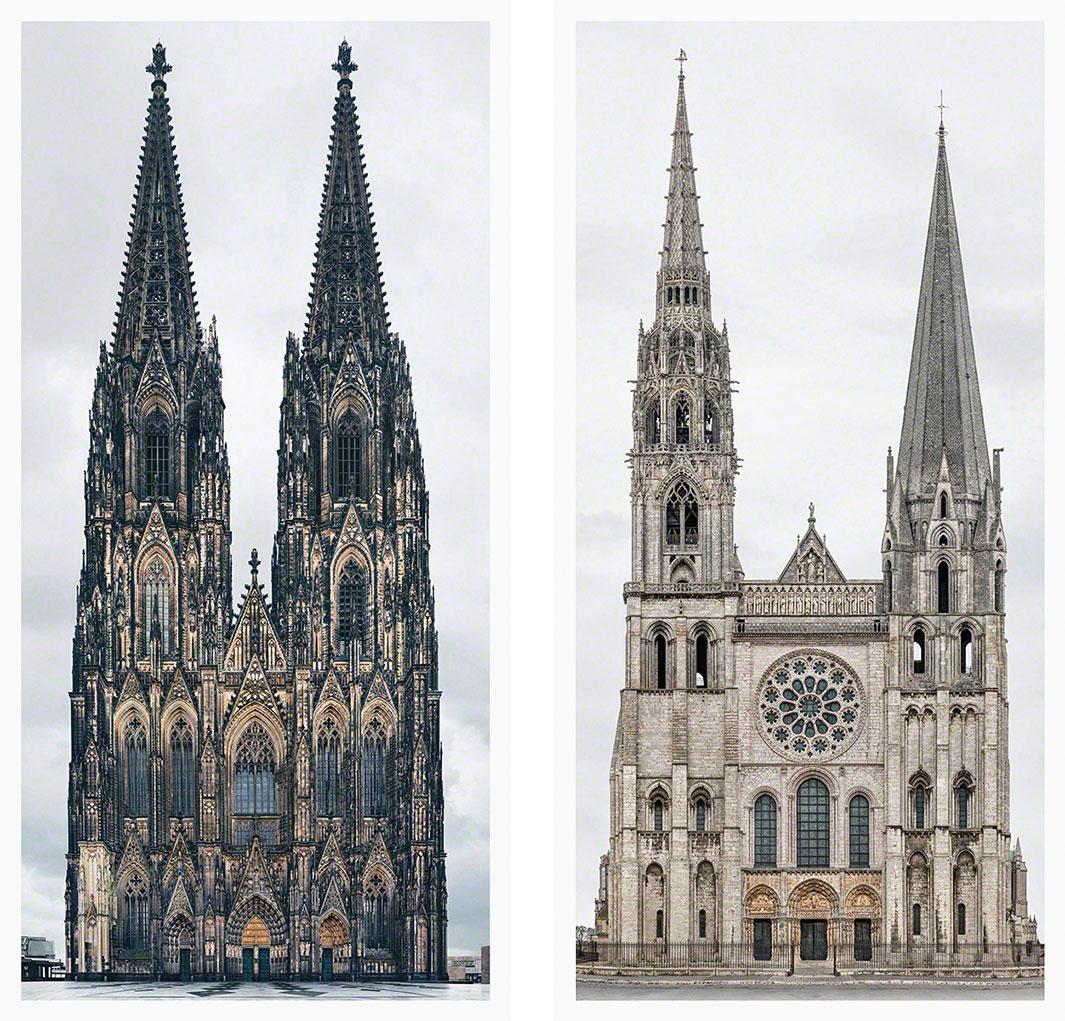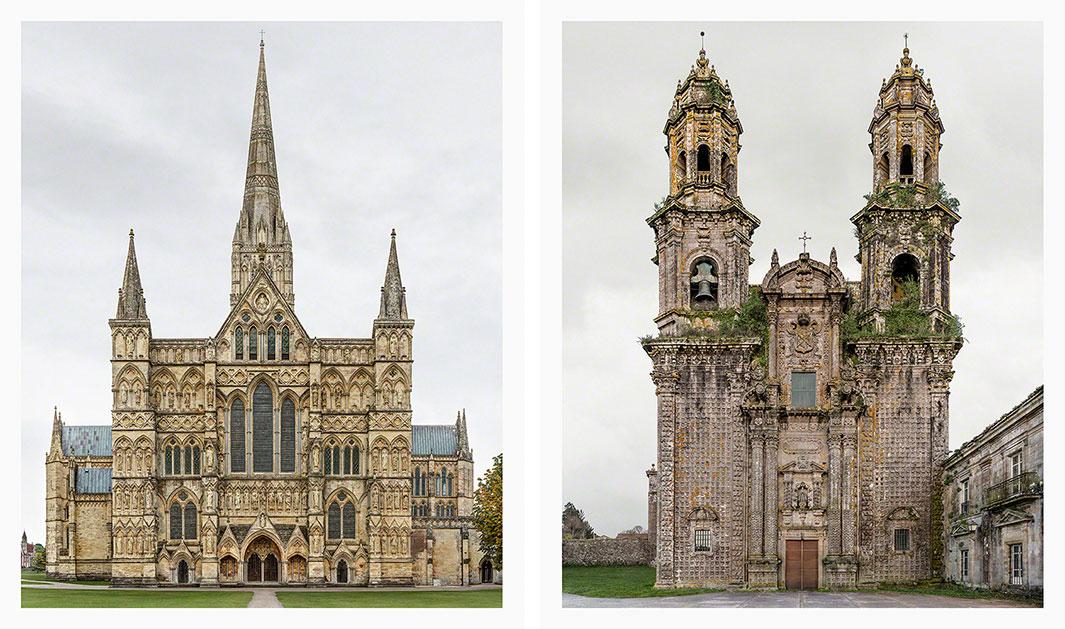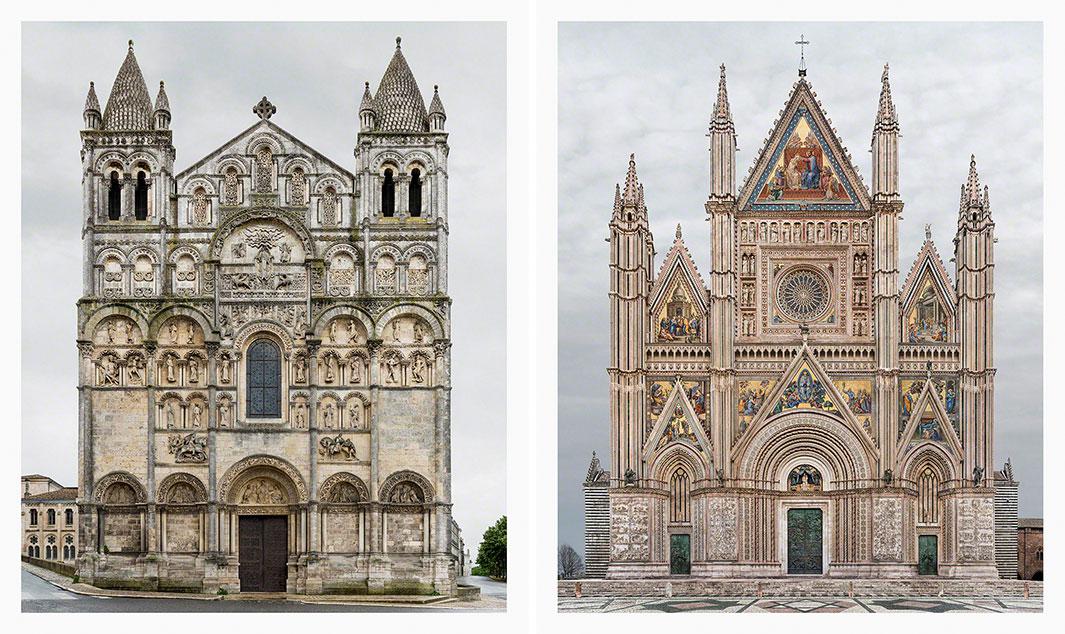After two decades of work as a photographer, Markus Brunetti was feeling underwhelmed, uncreative, and bored.
To mix things up, Brunetti, along with Betty Schoener, his “partner in work and life,” built a truck, left home, and began traveling around Europe. It was meant to last one year, but has since turned into a decade-long way of life that they say is “open-ended.”
Like many tourists traveling around Europe, the couple was impressed by the seemingly endless number of churches they encountered; a visual definition of “background noise.” Although they were the subjects of countless tourist snapshots, Brunetti began to imagine them as a larger project—a photographic exploration of the churches that he calls “Facades.”
Brunetti says his process of creating the work goes beyond photography—“The right term hasn’t been found yet!”—but begins with a simple draft photo taken on an iPhone and ends as a 10-foot image, some of which will be on view at gallery in New York opening Sept. 10.

© Markus Brunetti, Courtesy Yossi Milo Gallery, New York

© Markus Brunetti, Courtesy Yossi Milo Gallery, New York
Brunetti studies each church, cathedral, and cloister he photographs closely before taking hundreds, and sometimes thousands, of frames during similar light and weather conditions. He shoots everything from a street-level perspective without cranes or drones and then, along with Schoener, he mounts and reconstructs the facades “in our own intensive process of composition” that allows for the viewer to appreciate all of the intricate details of the structures.
Often, the buildings are under construction, so if he needs to reshoot any piece of the puzzle, he might have to wait years until scaffolding is removed before completing the work.
“This explains why we could only finish 42 works in the last 10 years,” he said. “The builders and architects that built the churches had to be patient; most of them never saw the finished result of their endeavors as it took many decades or hundreds of years to finish the buildings. I try to work on ‘Facades’ with the same spirit and patience they must have had when starting to work on the real buildings.”
The excitement of working on “Facades” has grown as the couple continues to work on the series. Brunetti said they have plans to extend the series to include synagogues, mosques, and temples and to travel to other parts of Europe and potentially other continents as well.

© Markus Brunetti, Courtesy Yossi Milo Gallery, New York
“The longer I work on ‘Facades,’ the more I am fascinated by the variety and complexity of the buildings. If I were to lose this fascination I would stop and find something new and different to stir my creativity. So far, the ‘Facades’ are nowhere near finished and we continue to travel and work on them.”
“The journey continues and we will be pleased to share our own cultural fascination with the viewers of every finished facade.”
Previously in Behold:
